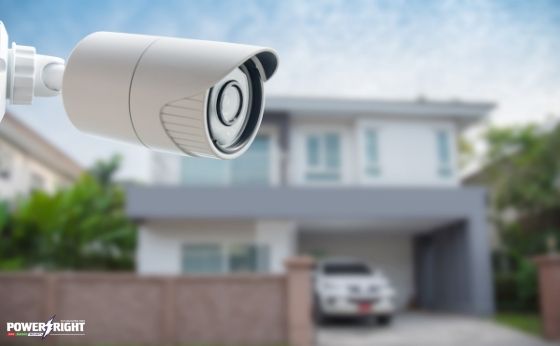
Surveillance cameras are essential for every home and office these days. You can never be too safe with crime rates increasing in the suburbs and cities. Taking necessary actions to protect your workplace and home from thieves and vandals has become more vital than ever.
A CCTV camera is one of the most effective tools helping to prevent break-ins and identify criminals in case an offence has occurred on your premises. Indoor and outdoor security cameras can function as a warning for potential burglars and intruders.
There are plenty of surveillance cameras with many specifications from different reputable brands like Avigilon, Hikvision and Honeywell, available in the market. However, the two main types of cameras used are the bullet type and the dome type. Which of them will best fit your needs? Each of these types has its unique characteristics.
Bullet indoor and outdoor security cameras refer to the cylindrical ones. These cameras are usually used due to their longer range and lens size. So, they are great for surveillance of outdoor areas like backyards and parking lots.
Pros:
Cons:
Dome security cameras are placed in a transparent dome. They are usually mounted under the eaves of your building or on the ceiling. It is possible to mount dome cameras outdoors, but most people install them indoors.
A dome camera is a common security solution for business premises, such as hotels, big offices, shopping malls, and restaurants. The specific design of the dome camera allows covering a much larger area for surveillance. You can use this security solution if you require a wide-angle view of the entire place.
Pros:
Cons:
When choosing between these two types of CCTV cameras, we suggest you consider the following aspects:
Areas of application
The principal design characteristics of dome and bullet cameras mean they have different areas of effectiveness. As already discussed, the extruded shape makes a bullet camera more conspicuous, making it clear that the potential entry points are being watched.
What is more, these solutions are more durable and suitable for harsh environments. So, if you are looking for an outdoor security camera, the bullet type might be the better choice.
For instance, Avigilon H5A Explosion-Protected bullet cameras are built to efficiently control the processes and operational monitoring in hazardous environments that face the risk of explosions, such as industrial, oil and gas, marine and food production sites.
Alternatively, a dome camera, such as The H4 Mini Dome by Avigilon, is usually small, discreet, having a wider field of view. These qualities allow one camera to monitor a larger area with lower image resolution. Remember that these cameras are prone to degradation in humid conditions.
Ease of installation
The installation process for these cameras is similar. Although once installed, dome cameras might be trickier to orient.
Camera Range
Both varifocal and fixed lens types are available for bullet and dome surveillance cameras. Varifocal types are necessary if you want to zoom.
Opt for a varifocal bullet camera If you need pure range while keeping image quality as best as possible. Cameras with a narrower field of view will provide better image quality when zoomed in further.
To sum up, bullet and dome CCTV cameras have their advantages, depending on your requirement and needs. Most business installations will demand a combination of these two types of cameras to achieve the tightest security.